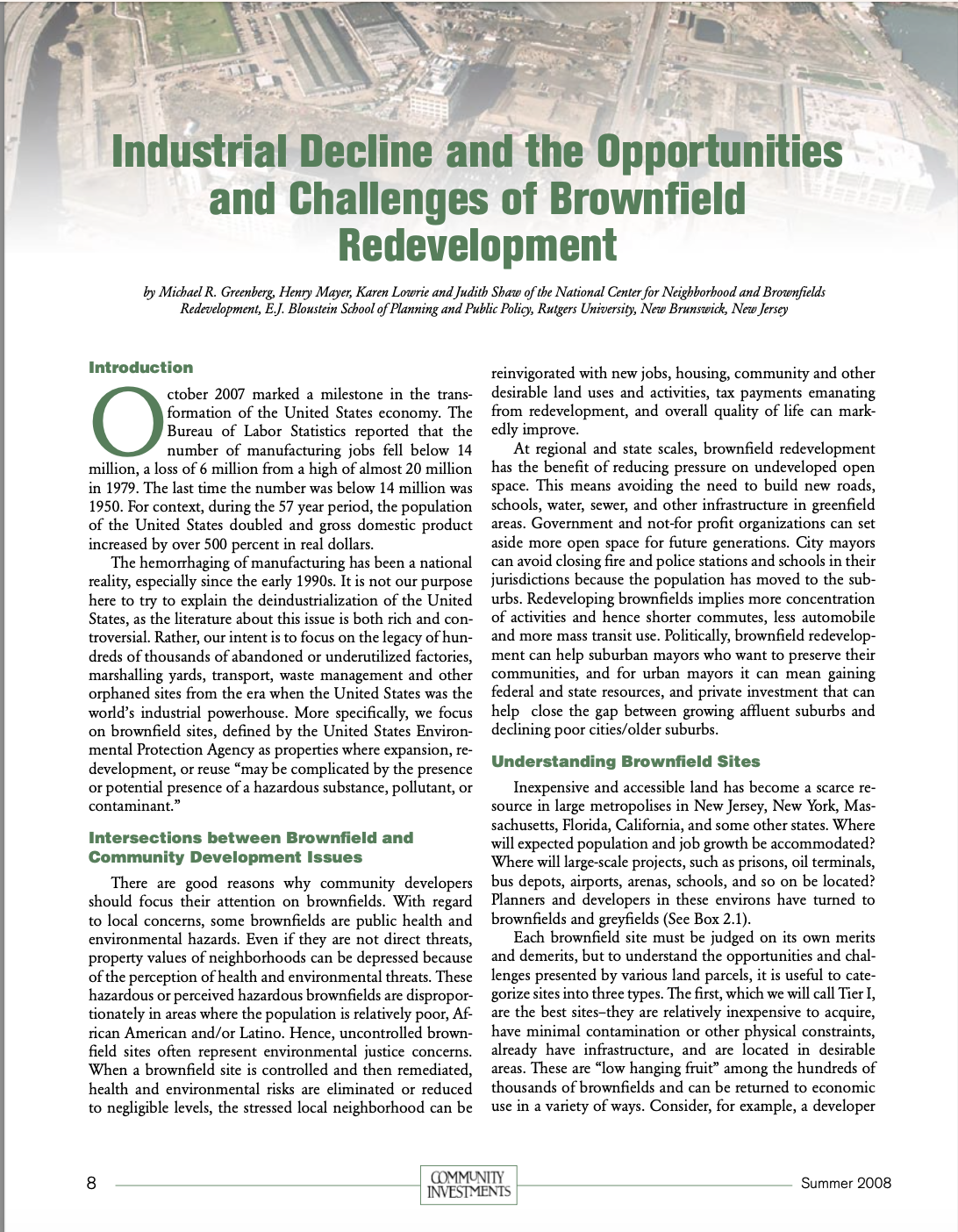October 2007 marked a milestone in the trans-formation of the United States economy. The Bureau of Labor Statistics reported that the number of manufacturing jobs fell below 14 million, a loss of 6 million from a high of almost 20 million in 1979. The last time the number was below 14 million was 1950. For context, during the 57 year period, the population of the United States doubled and gross domestic product increased by over 500 percent in real dollars.The hemorrhaging of manufacturing has been a national reality, especially since the early 1990s. It is not our purpose here to try to explain the deindustrialization of the United States, as the literature about this issue is both rich and con-troversial. Rather, our intent is to focus on the legacy of hun-dreds of thousands of abandoned or underutilized factories, marshalling yards, transport, waste management and other orphaned sites from the era when the United States was the world’s industrial powerhouse. More specifically, we focus on brownfield sites, defined by the United States Environ-mental Protection Agency as properties where expansion, re-development, or reuse “may be complicated by the presence or potential presence of a hazardous substance, pollutant, or contaminant.”
